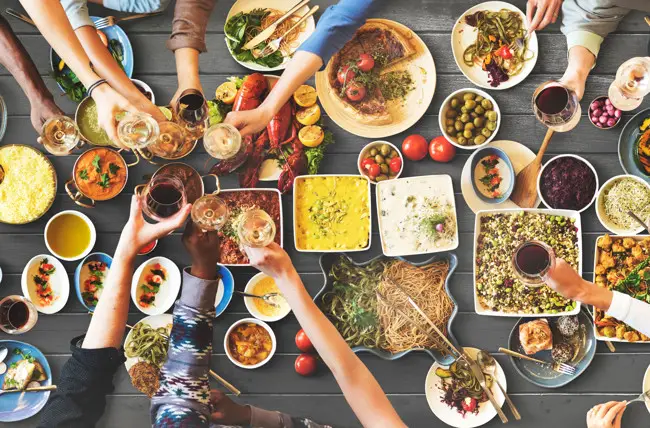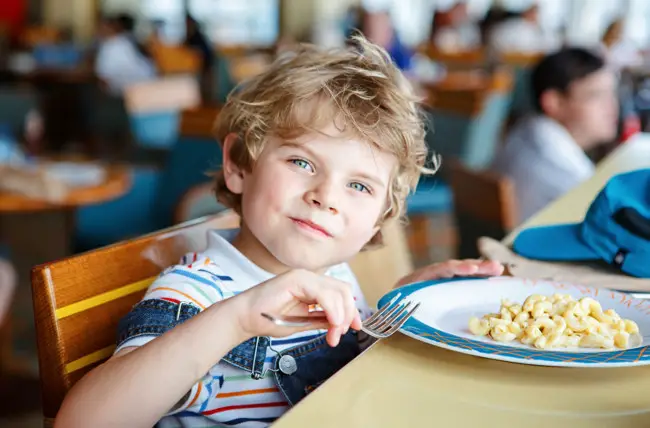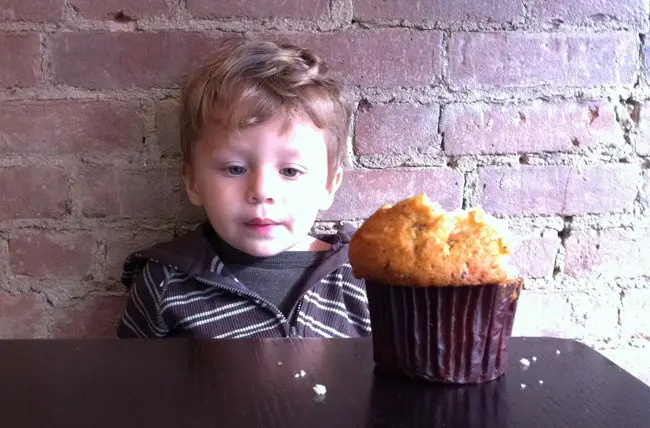Do you dish out servings of comfort and happiness to your kids with sugary treats? Be careful. If you frequently offer food as proof of your love, you may be teaching your children to mix feelings with food, and to soothe their souls with sweets.
I love giving my daughter cookies. It makes me feel fantastic to give her cake, too. And while I’m confessing, nothing beats giving her ice cream.
My daughter lights up when she gets these goodies, and making her happy makes me happy. Actually, it makes me ecstatic!
Do you know what I mean?
When I provide a wholesome meal—complete with salad and vegetables—I feel like a good mother. But when I give my daughter the treats she loves, I feel like I’m directly transferring love from my heart to hers. It’s like hooking up an I.V. of happiness.
The drawback of my cookies-equal-love problem is that one of the most important tools parents have for teaching kids to eat right is proportion: offering foods in relation to their healthful benefits. Treats should be offered occasionally, but I love my daughter all the time!
Setting boundaries around food can be tough—especially if our lovely little ones are well versed in begging, whining, and otherwise canoodling candy out of us. We want to make them happy, and sometimes brownies do the trick.
But I really want my daughter to learn that food is food, that treats are treats, and that love is a feeling. After all, mixing up food and feelings produces one of the greatest eating struggles people ever have.
Unfortunately, it’s not just my nagging suspicion that loading love onto the plate leads to poor eating. Research backs me up.
In one recent study, researchers found that family cooks generally fall into one of five dominant personality profiles: Giving Cooks, Healthy Cooks, Innovative Cooks, Methodical Cooks, and Competitive Cooks. And every type of cook produces healthy eaters except one… the Giving Cook!
The Giving Cook specializes in comfort foods and traditional favorites and provides lots of home-baked goodies. There are plenty of ways parents teach the wrong lessons around food. It’s not just food equals love. There’s also food equals comfort, food equals reward, food equals guilt, and food equals punishment.
Do any of these statements from the book Mindless Eating sound familiar?
• “Eat this pudding, it will make you feel better.” (Food as comfort)
• “If you get an A on your test, we’ll go out for ice cream.” (Food as reward)
• “Clean your plate; children are starving in China.” (Food as guilt)
• “Finish your vegetables or you can’t watch TV.” (Food as punishment)
Eating Emotions
Kids are always going to do some emotional eating—it is unavoidable, especially as long as birthdays, Thanksgiving, and grandmas exist. But consciously parenting kids around food means minimizing the times we use food as a tool.
Research shows that emotional overeating in children is not uncommon. In fact, while most young children lose their appetite in response to stress, a recent study discovered that, by the ripe old age of 3, some kids have already learned to cope with negative emotions by eating more. (Three!)
Giving kids treats to distract them from negative emotions is common enough—even doctors do it by doling out lollipops after shots. But if you frequently ‘fix’ booboos with brownies or resolve conflict with cookies, then watch out: You may be teaching your children to soothe their souls with sweets.
Unfortunately, food ain’t no magic bullet. What it fixes in the short term it damages over time.
Some parental feeding practices teach kids to use food to cope with difficult feelings. Researchers call it emotion regulation: the process whereby parents teach their children to use food to address emotional arousal in the absence of hunger.
A recent study of 3- to 5-year-olds found that children whose mothers used food to regulate emotions ate more cookies in the absence of hunger than kids whose mothers didn’t use this strategy.
More tellingly, look at what happened when the researchers intentionally frustrated some of the children: The kids whose mothers used food for emotion regulation ate more chocolate. But the kids whose mothers didn’t use food for emotion regulation lost their appetites. They ate less chocolate.
If you use food to regulate your children’s emotions, you’re not just teaching your kids that food will make them feel better—though that certainly is one lesson they learn. In addition, you may actually be teaching your kids to confuse emotional discomfort with hunger. It’s the mixing up of these two states—negative emotions and hunger—that leads to overeating.
Children who inappropriately identify emotional discomfort as hunger are more likely to respond to any negative arousal state with food (and it’s not usually broccoli!).
Kids who engage in emotional eating take in more calories. What’s more, those calories tend to be from sweet, salty, fatty, calorie-rich foods and drinks. Maybe that’s why researchers have found that as emotional eating increases, so does a child’s body mass index (BMI). This association tracks into adolescence, and then into adulthood.
Non-Edible Rewards
Food is a powerful elixir, but it can also be a dangerous tool. The next time you reach for the cookie jar to cheer up your special cherub, think about delivering a hug instead, or one of these 10 other non-edible rewards:
• An extra story at bedtime
• A sticker she can put towards a bigger reward, such as a book or toy
• A little extra TV time
• A few extra minutes before bedtime (even an extra 10-15 minutes can seem exciting to young kids)
• The opportunity to select a favorite meal for dinner the following night (even though this is a food-related reward, it’s not candy, and your child is not earning the meal)
• Game time with you
• A backwards dinner: Serve dessert first, main course second (you won’t need to worry about your child being full if you make the dessert small)
• A ticket they can exchange for a one-time exemption from performing a chore or helping with a task, such as putting on shoes, that you normally insist they do themselves .
• A ticket to be “the boss” for an hour
• The privilege of determining one of your meals the next day
Go wild with the bribes, if it helps. And remember: Every time you feed your child, you are teaching him something about what, when, why, and how much to eat. The only question that remains is this: What are you going to teach him?
Dina Rose, Ph.D., is a sociologist, parent educator, and feeding expert. She is the author of It’s Not About the Broccoli (Penguin), which describes the three eating habits kids need to learn to grow into healthy eaters and gives parents practical ways to teach these food skills. This article was excerpted with permission from her blog, ItsNotAboutNutrition.com. Dr. Rose lives in Hoboken, NJ, with her family.
More by Dr. Dina Rose:
Try the Taste-and-Rate Approach to Get Your Kids to Try New Foods





















